Have you noticed your car's splash shield dragging? Are you wondering if you can still drive with it? You've come to the right page! We’ve sifted through the internet and researched the answers to share with you.
You can drive your vehicle while the splash shield is dragging. However, it is strongly advised that you fix or replace it right away. In the absence of such precautions, moisture, dirt, and debris may enter the engine compartments and harm the engine parts.
We will cover the engine splash shield in great detail in this article. We'll also how important it is, the reasons that made it drag, how to replace it, and more. So keep on reading.
How Important Is Splash Shield?
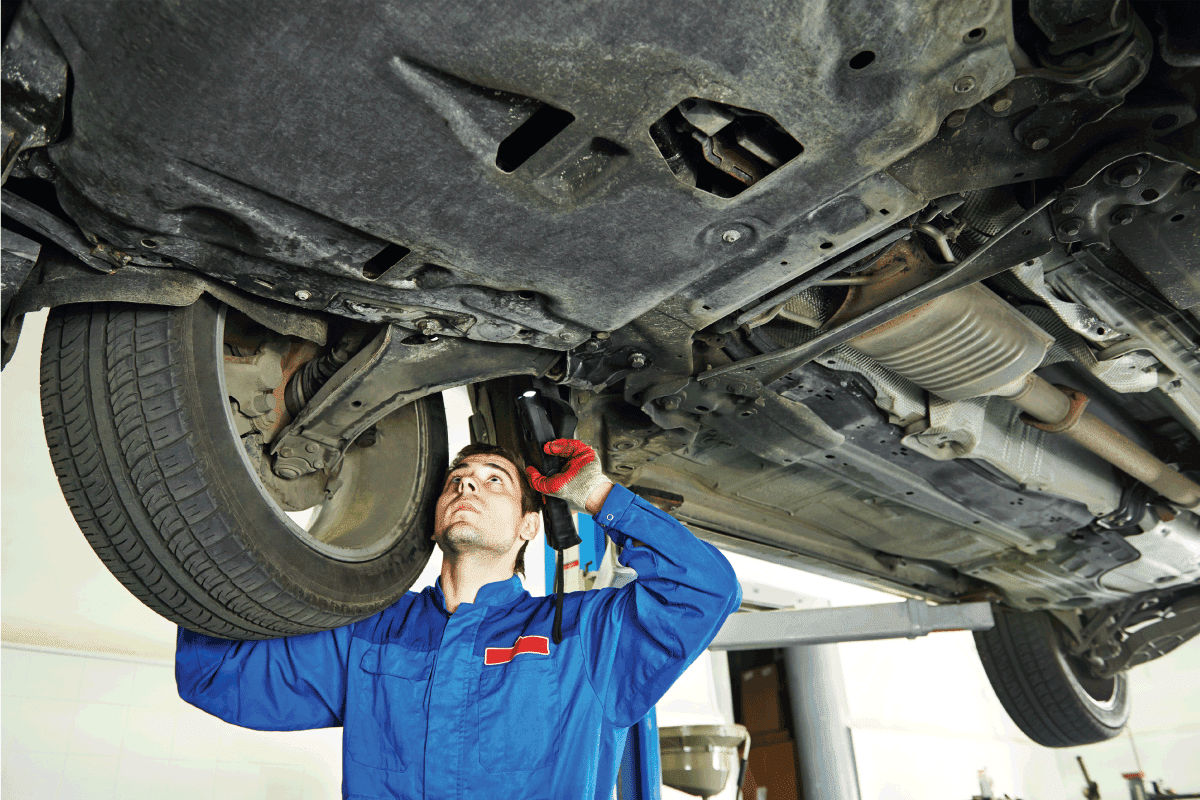
The engine splash shield is a panel situated beneath the engine of your car. It is also known as the engine splash guard, skid plate, or lower engine cover. It is an important component of the car for the following reasons:
Barrier Against Debris On The Road
The bottom engine cover aids in defending the engine against dirt, rocks, and other debris the tires may throw up. These particles would constantly pelt your engine without a splash shield, which would reduce its performance and limit its lifespan.
Protects More Sensitive Parts Besides The Engine
The oil pan, transmission, and other components all gain from the engine splash shield. Without it, these components will need to be changed more frequently, as they are crucial to keeping your car in working order.
Keeps The Engine Operating Cooler
The ability to keep the engine operating cooler is another advantage of an engine splash shield. The splash shield aids in preventing overheating by reflecting heat away from the engine. This is especially essential when it's hot outside and the engine is working hard.
Prolongs The Engine's Life
A splash shield aids in extending the engine's lifespan by shielding it from dirt, rust, corrosion, and other things. For the reason that it shields the engine's components from deterioration. Thus, this helps to avoid needing to make costly repairs later on.
Can You Drive With A Dragging Splash Shield?
Of course you can, as the shield simply works to keep water and debris out of the sensitive parts of your engine. The vehicle will continue to run because a dragging shield does not indicate an inoperable engine, but you are putting your engine at risk.
However, driving while your engine splash shield is dragging is not advisable. Your car's drag coefficient will suffer from it. The issue will reduce the car's aerodynamic effectiveness, somewhat slowing it down.
To overcome the wind resistance that slows the car, you might need to use more fuel. Making your engine work harder due to the dragging of the lower engine cover's reduced aerodynamic efficiency can shorten your engine's lifespan.
What Are The Reasons For Splash Shield Dragging?
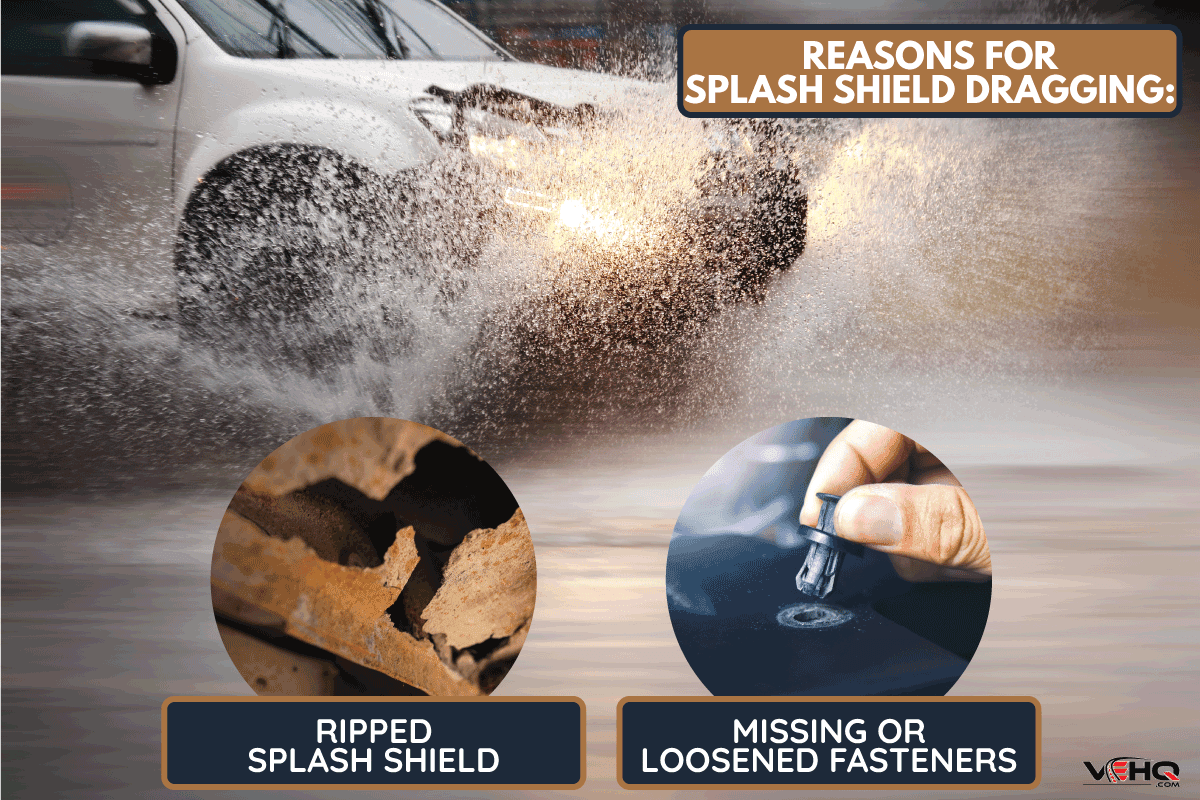
As you may expect, the splash shield is quite vulnerable to damage. Its sole responsibility is to guarantee the safety of the rest of the vehicle. Your shield may come off. Occasionally, it won't come off entirely and will drag on the ground. Here are some possible reasons for this:
1. Missing Or Loosened Fasteners
In many cars, a set of fastenings that may include bolts, screws, or even washers holds the engine splash guard firmly in place. Due to potholes that cause the car to shake over time, some of these parts can come loose or fall off.
The splash guard will then hang as a result of the afflicted parts of the panel detaching from the engine. If this proves to be your problem, replacing those missing fasteners or tightening the loose fasteners will fix the issue.
2. Ripped Splash Shield
Splash shields are frequently constructed from a variety of materials, including metal and plastic. The majority of metal and plastic guards aren't strong enough to withstand tearing when the automobile drags the shield over a hard object like a rock or a large bump.
As a result, the ripped portion under the car will be dragged on the road, necessitating immediate attention. The best way to repair a ripped shield is to fully replace it.
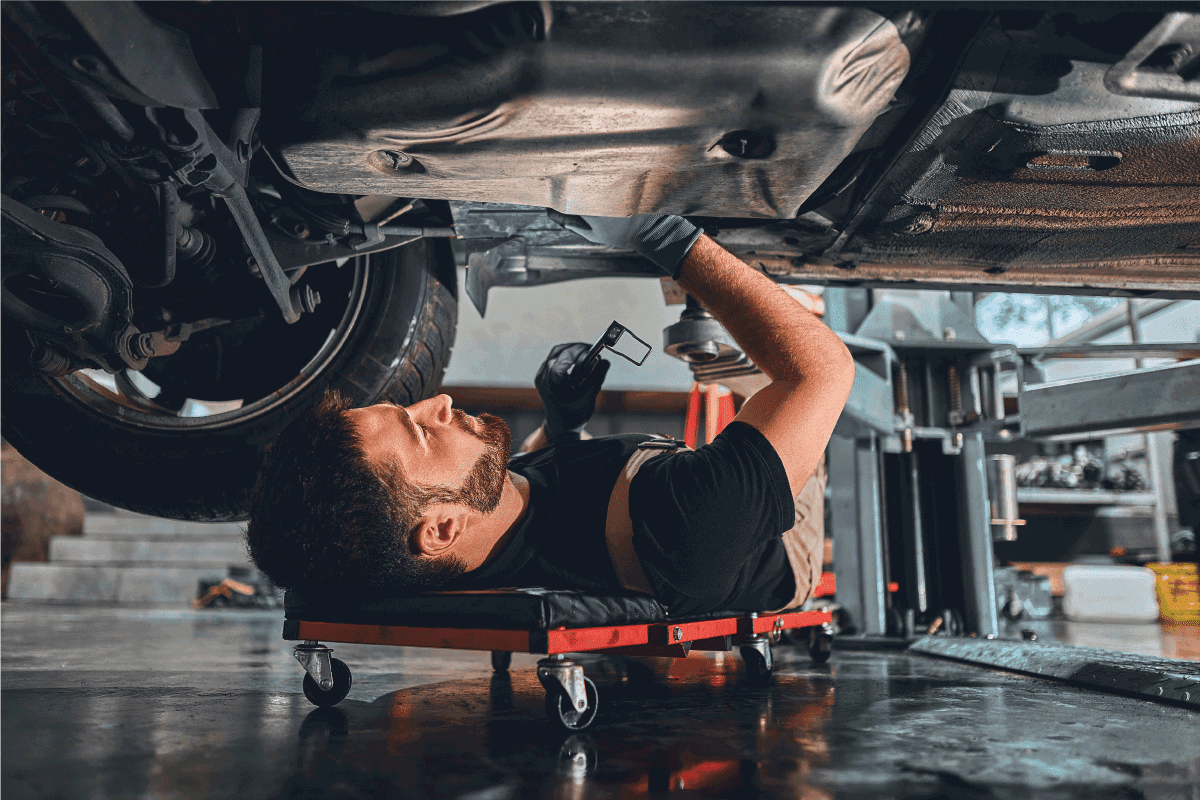
How To Repair/Replace Splash Shield?
If you want to change the engine splash shield yourself, follow these steps:
1. Put on the appropriate personal protective equipment (PPE) like goggles, gloves, and/or closed shoes.
Click here to see these goggles on Amazon.
Click here to see these gloves on Amazon.
2. Cool down the engine to prevent heat-related injuries.
3. Park your car on a level surface.
4. Lift your car up using jack stands so you can access the engine splash shield. To guarantee your safety when performing this, be sure to follow the correct process of the equipment.
Click here to see this jack stand on Amazon.
5. Find the engine splash shield with the aid of your flashlight.
Click here to see this flashlight on Amazon.
6. Wipe off the surface with a rag or any cleaning cloth to remove any moisture or loose dirt that may have accumulated there to make sure you can see all of the bolts or clips holding it in place.
Click here to see this rag on Amazon.
7. Locate the mounting places and detach the outdated fasteners (nuts, screws, washers, or clips) using your socket wrench, screwdriver, prying tool, or whichever is applicable.
Click here to see this socket set on Amazon.
Click here to see this screwdriver on Amazon.
8. Remove any ripped or worn splash shields.
9. Install the new engine splash shield and affix it using the necessary fasteners. Ensure that you adhere to the appropriate torque recommendations.
10. To ensure that the splash shield is firmly connected to the car's underside, lower the vehicle and give it a test drive.
Below is a YouTube video that demonstrates the aforementioned steps.
How Much Does It Cost To Fix A Splash Shield?
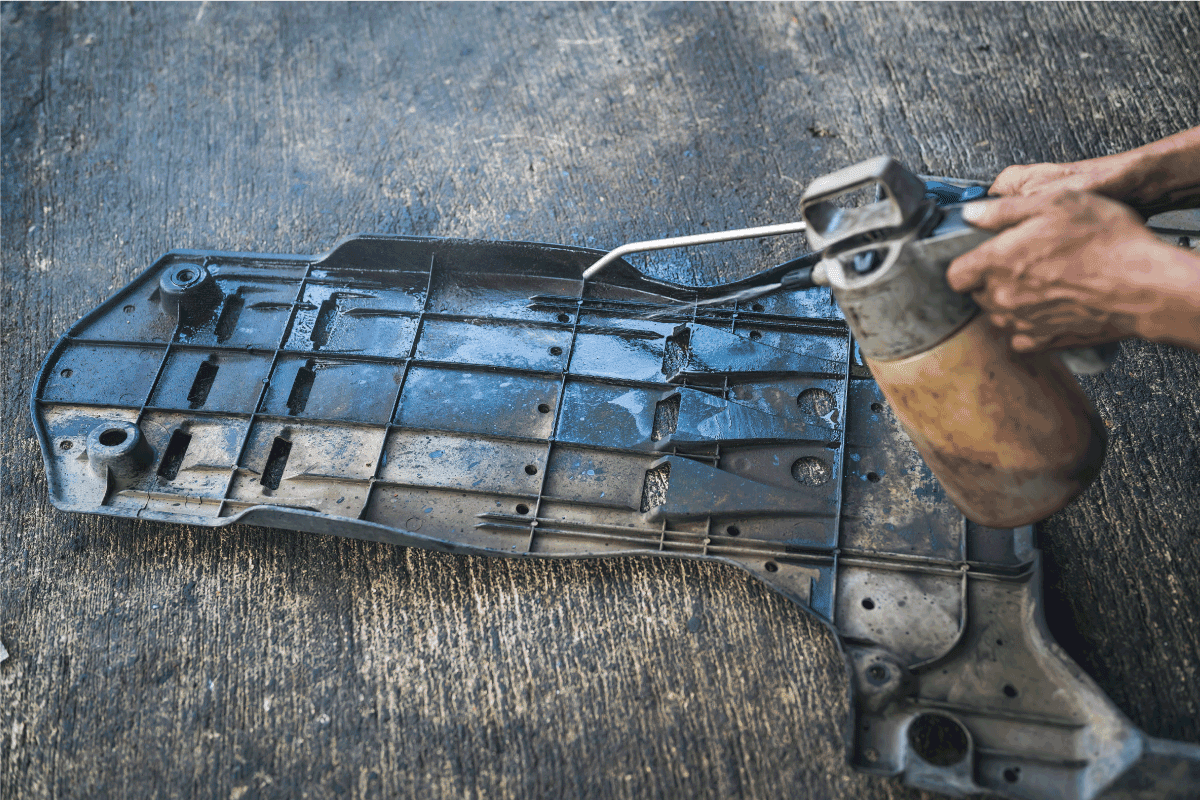
You should take into account both the cost of the parts and the cost of labor if you want to have your engine splash shield professionally installed or changed.
The cost of the part alone might range from $0.3 to $600 depending on the material used in the shield and where you purchase the parts.
Most of the cost of labor will depend on who you hire and where you are. In a garage, labor costs normally range from $80 to $130 per hour, however, they can vary a little. If you take your car to a dealership, the labor cost will probably be greater than it would be at a local independent shop.
In either case, the work should only take a half-hour to an hour. It should only take longer if there is more major repair work to be done.
If you replace the engine splash shield at the same time that another repair is being done, you might be able to save some money on labor. For instance, if you want to get to the oil pan, you might need to take the splash shield off some cars. Thus, having the maintenance completed at the same time as an oil change may help to lower the cost.
What Are The Types Of Splash Shields?
The engine splash shield must resist the hostile environment in which it operates and substantial wear and tears if it is to be efficient in protecting your car. Several types of engine splash shields are as follows:
Plastic Splash Shields
Engine splash shields and other parts of vehicles frequently employ plastic, which is a somewhat flexible material. Fiberglass is a kind of plastic that has been fortified with glass fibers and resin. It is a wonderful option for a skid plate because it is both stronger and lighter than regular plastic.
However, they are typically not the ideal option for driving off-road or in challenging situations. A plastic barrier will eventually be vulnerable to damage from strong vibrations and friction as well as constant impacts from pebbles and other debris.
Aluminum Splash Shields
An aluminum skid plate is lighter and more durable than a plastic one and offers marginally more protection in more challenging circumstances. It will withstand collisions and debris better, though they aren't as durable as steel shields.
Shields made of aluminum are nonetheless susceptible to breaking. However, the part might become considerably stronger due to the design and quality.
In this case, the cheapest component might not be the best choice. Aluminum shields can be challenging to maintain, but they at least don't rust very easily, making it perhaps a superior material to steel.
Steel Splash Shields
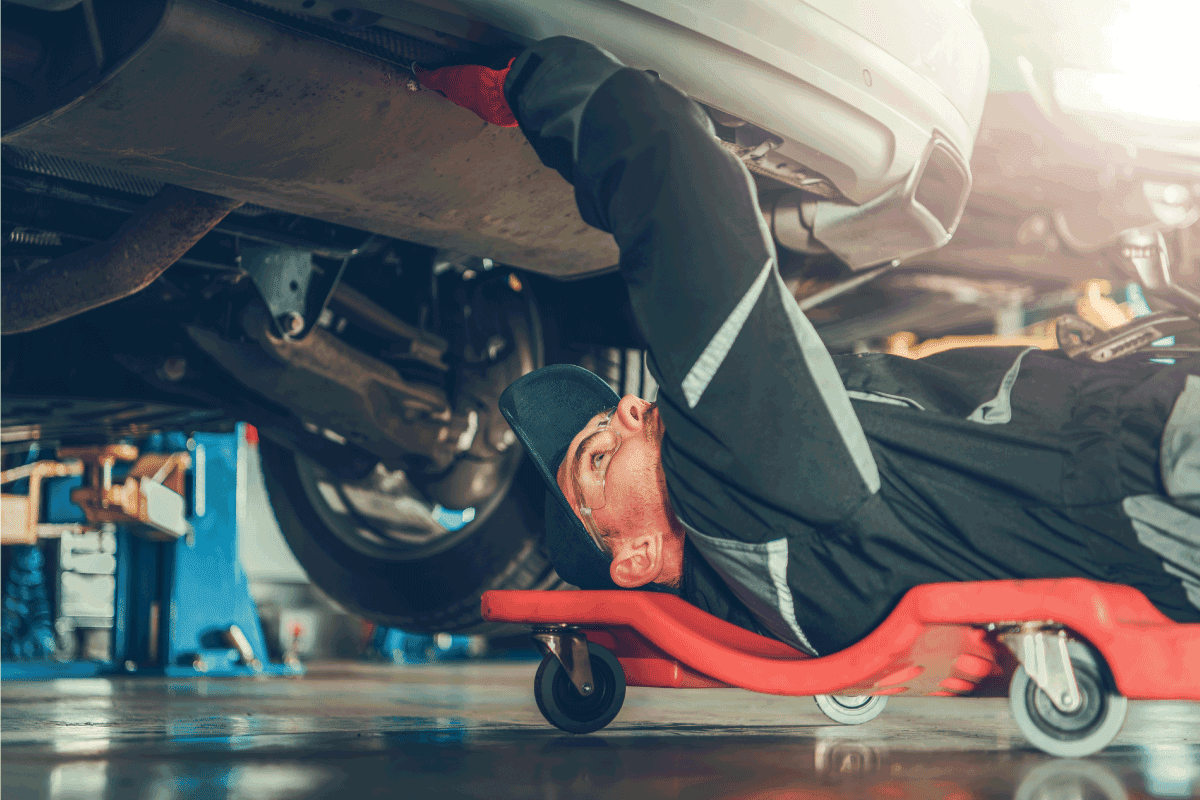
For engine splash shields, steel is the heaviest and strongest material available. You might want to think about a steel engine splash shield if you routinely drive on especially difficult terrain or take your car off-road.
These plates will survive wear and tear over time and are more suited to withstand powerful impacts. It is preferred by some because it can easily fix over other materials. If the steel splash shield gets dented, it can fix in a manner similar to how typical automotive dents are fixed.
Conclusion
It is our sincere hope that this article has given you a better understanding of splash shields and how they operate. It's important to fix a dragging shield as soon as possible rather than simply ignoring it. If left unattended, a dragging shield may eventually cause issues sooner or later.
Check out some articles we have below.







